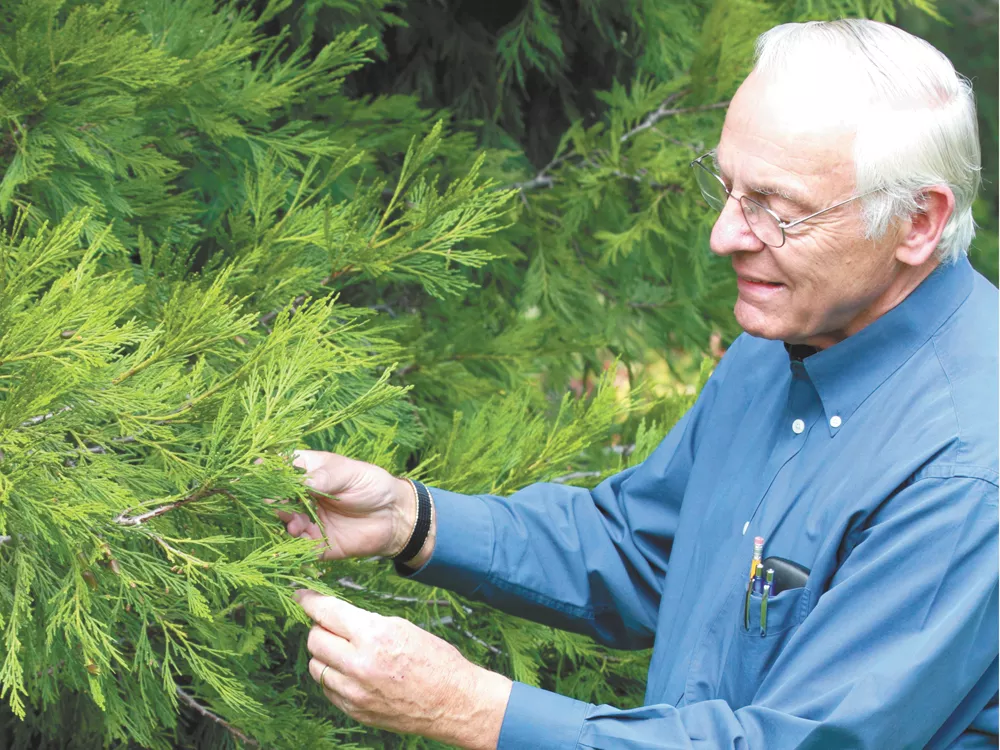“It’s a bit of an obsession,” Lester says. “I found that [Spokane] has very interesting trees in terms of variety and size.”
For the last five years, the retired orthopedic surgeon turned master gardener has taught himself to identify trees. He “studies” them everyday in public parks and on private land.
He even knocks on strangers doors and asks to “spend some time” with the monstrous oak or beautiful maple in the yard. As a hobby, Lester is cataloging “champion trees”— the largest tree species of their kind in Washington State.
He raves about rare Hungarian Linden trees in John A. Finch Arboretum, vibrant Miyabe Maple trees, mighty Colorado white firs, and a golden weeping willow on 42nd Avenue and Ray that he thinks is the biggest of its kind in the state.
This year, for the first time ever, Lester has used his passion for trees to create a guided tree tour of Manito Park.
The wind sends a flurry of debris — pine needles and pinecones — that sounds like rain blanketing the hillside in the warm June breeze. Each gust of wind swirls a perfumed fragrance from the season’s last pastel purple, pink and white blooms in the Lilac Garden at Manito Park.
Giant trees and mighty branches provide canopy and shade to the 90-acre park and its beds of flowers, duck pond and picnickers.
Some trees are blemished with knots, warped trunks and large sweeping branches. Some are leafy and stout. Others are tall and odd like something out of a Dr. Seuss book.
Lester loves them all.
He belongs to The Friends of Manito, a nonprofit organization that raises funds and provides educational outreach for the sprawling South Hill park. Lester’s first, two-hour tree tour was given to approximately 30 people in April.
“The tour provides a map and orientation to trees in the park so visitors can return for self-guided tours and study on their own,” Lester says. “My hope is that many people will become fully familiar with the park.”
Tour-goers receive a map of the four-part tour and a handout of trees specific to each section. The first tour focused on evergreens and early bloomers such as Cornus mas dogwood and magnolias.
The next tour in June will discuss the area south and west of Gaiser Conservatory, all the way from the perennial garden to the Lilac Garden. If the group is lucky, Lester says, the Japanese lilacs will be in full bloom.
Lester hopes the tree tour will do more than simply navigate visitors throughout the park.
“The more you are familiar with what is around you, the more you see,” he says. “The more you see, the more you appreciate what is around you.
“If people become knowledgeable about their environment hopefully they will take better care of it.”
Guided Tour of Manito Trees • June 23, July 28 and Sept 22, from 1-3 pm • Free • Manito Park meeting room • thefriendsofmanito.org • 456-8038

